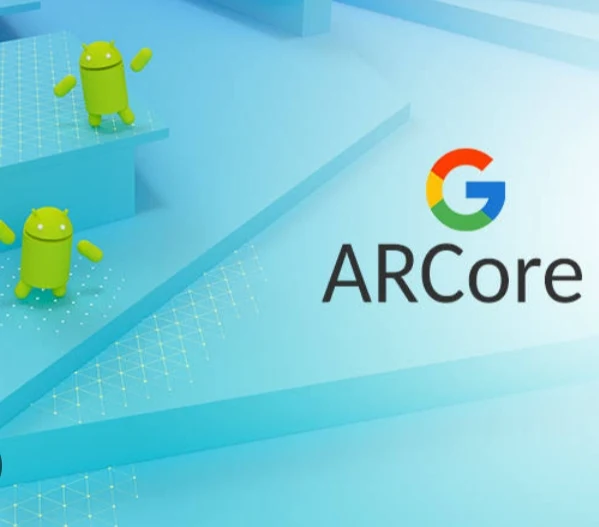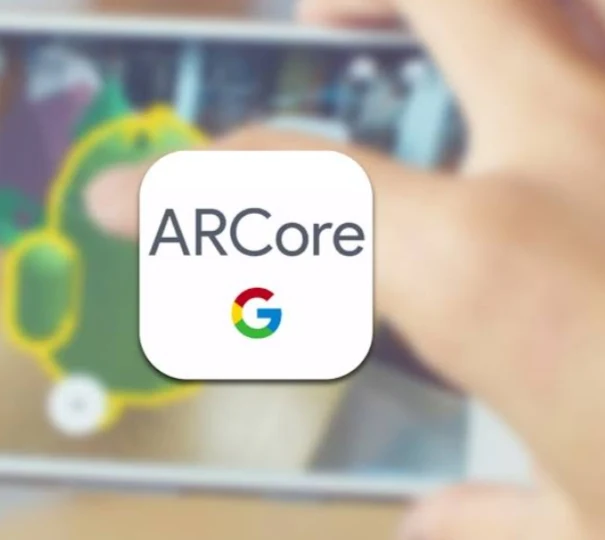Google ARCore: Unveiling the World of Augmented Reality
Augmented reality (AR) is revolutionizing the way we interact with the world around us. By overlaying digital elements onto the physical world, AR creates immersive experiences that blur the lines between reality and the virtual. Google ARCore is at the forefront of this revolution, providing a robust software development kit (SDK) for developers to build next-generation AR applications.
What is Google ARCore?
ARCore is a software development kit created by Google that allows developers to build AR experiences for Android and iOS devices. It offers a set of tools and functionalities that streamline the AR development process, making it easier for developers to create engaging and interactive AR applications.
Key Features of ARCore
ARCore provides a foundation for AR development with essential features like:
Google ARCore Features
Google ARCore empowers developers to build immersive augmented reality (AR) experiences. Here's a breakdown of its key features:
Table: Google ARCore Features
| Feature | Description |
|---|---|
| Motion Tracking | Tracks the device's movement and position in real-time. This allows AR objects to respond realistically to user actions, like tilting the phone to view an object from different angles. |
| Environmental Understanding | Analyzes the physical environment, including surfaces (floors, tables) and lighting conditions. This enables developers to create AR objects that interact seamlessly with the surroundings. For example, a virtual lamp can cast a shadow on a table. |
| Light Estimation | Estimates the ambient light in the environment. This allows developers to adjust the lighting of virtual objects to match the real world, creating a more natural look. |
| Anchors | Creates virtual points of reference that persist in the real world even if the device is moved. This enables developers to create persistent AR experiences. Imagine placing a virtual vase on a table; an anchor would remember its position so it stays there even when you walk around the room. |
| User Interaction | Provides tools for users to interact with AR objects through touch gestures or other means. This allows for a more engaging and interactive AR experience. |
| Oriented Points | Detects specific points in the environment with a defined orientation. This can be useful for tasks like placing virtual furniture or aligning objects with real-world features. |
| Depth Understanding (Beta) | (Under development) Analyzes the depth of the environment to create a more complete 3D understanding of the surroundings. This opens doors for advanced AR experiences like spatial mapping and occlusion (hiding virtual objects behind real-world objects). |
| Augmented Images | Recognizes and tracks real-world images, allowing developers to overlay digital content onto those images. Imagine scanning a product image and seeing it come to life in 3D AR. |
- Motion Tracking: ARCore tracks the movement and position of the device in real-time, allowing developers to create AR objects that respond to the user's movements.
- Environmental Understanding: ARCore can understand the physical environment, including surfaces and light. This enables developers to create AR objects that interact realistically with the surroundings.
- Light Estimation: ARCore estimates the lighting conditions in the environment, allowing developers to adjust the lighting of virtual objects for a more natural look.
- Anchors: Anchors are virtual points that persist in the real world, even when the device is moved. This allows developers to create persistent AR experiences that remain in place over time.
Benefits of Using ARCore
ARCore offers several advantages for developers, including:
- Cross-Platform Development: ARCore allows developers to build AR experiences for both Android and iOS devices with a single codebase.
- Simplified Development Process: ARCore provides essential tools and functionalities, making AR development more accessible and efficient.
- Large User Base: ARCore is integrated into a vast number of devices, giving developers access to a wide audience.
Table: Key Features of Google ARCore
| Feature | Description |
|---|---|
| Motion Tracking | Tracks device movement and position for responsive AR objects. |
| Environmental Understanding | Understands physical surroundings (surfaces, light) for realistic interactions. |
| Light Estimation | Estimates lighting conditions for natural-looking virtual objects. |
| Anchors | Creates persistent virtual points in the real world. |
The Future of ARCore
ARCore is constantly evolving, with Google actively adding new features and functionalities. As AR technology continues to mature, ARCore is poised to play a pivotal role in shaping the future of AR experiences. With its ease of use, cross-platform compatibility, and powerful features, ARCore empowers developers to create groundbreaking AR applications that will transform the way we interact with the world around us.
Technology Uses for Google ARCore with Table
Google ARCore empowers developers to create a wide range of augmented reality (AR) experiences. Here are some key technology uses and how ARCore facilitates them:
Table: Technology Uses for Google ARCore
| Technology Use | Description | How ARCore Facilitates |
|---|---|---|
| Education and Training | AR can overlay digital information onto physical objects, bringing lessons and training to life. Imagine students exploring the human body in 3D or mechanics learning how an engine works with an AR overlay. | * Motion Tracking allows students to interact with virtual objects in a natural way. * Environmental Understanding enables AR content to be placed and scaled accurately in the real world. |
| Maintenance and Repair | AR can provide step-by-step instructions with visual overlays, guiding users through complex repair processes. A technician could see instructions highlighted on a piece of machinery they're repairing. | * Anchors can persist instructions in the real world, even as the user moves around the equipment. * User Interaction allows users to confirm steps or access additional information through gestures. |
| Product Visualization | AR can allow customers to virtually place furniture or other products in their homes before buying. Imagine visualizing a new couch in your living room to see if it fits the space. | * Light Estimation ensures virtual products have realistic lighting to match the user's environment. * Depth Understanding (Beta) can be used to more accurately position virtual objects in real-world spaces. |
| Gaming and Entertainment | AR can create immersive gaming experiences where virtual elements interact with the real world. Imagine catching virtual creatures in your backyard or battling aliens in your living room. | * Motion Tracking allows for responsive gameplay based on the user's movements. * Oriented Points can be used to create specific locations for in-game interactions. |
| Retail and Marketing | AR can create interactive experiences for customers, such as trying on virtual clothes or viewing product information with an AR scan. Imagine virtually trying on a new pair of sunglasses before purchasing them. | * Augmented Images allows AR content to be triggered by recognizing specific real-world images. * User Interaction allows for easy manipulation and exploration of virtual products. |
This is not an exhaustive list, and new uses for ARCore are emerging all the time. As AR technology continues to develop, Google ARCore will play a key role in shaping the future of how we interact with the world around us.
Frequently Asked Questions about Google ARCore
Google ARCore is a platform that allows developers to create augmented reality (AR) experiences for Android devices. It uses the device's camera and sensors to track the user's environment and place virtual objects into the real world.
General Questions
- What is ARCore used for?
- ARCore is used to create AR applications for Android devices. These applications can range from games and entertainment to education and productivity tools.
- How does ARCore work?
- ARCore uses the device's camera and sensors to track the user's environment. It then places virtual objects into the real world, making them appear as if they are part of the scene.
Technical Questions
- What devices are compatible with ARCore?
- ARCore is compatible with a wide range of Android devices that have a compatible camera and processor. You can check the ARCore compatibility list on the Google Developer website.
- What features does ARCore offer?
- ARCore offers a variety of features, including:
- Motion tracking: Tracks the device's position and orientation in the real world.
- Light estimation: Estimates the ambient light conditions in the environment.
- Plane detection: Detects flat surfaces like walls and floors.
- Point cloud: Creates a 3D map of the environment.
- ARCore offers a variety of features, including:
Practical Questions
- How can I start developing AR applications with ARCore?
- You can start developing AR applications with ARCore by following the tutorials and documentation on the Google Developer website.
- What are some examples of AR applications built with ARCore?
- There are many AR applications built with ARCore, including:
- Games: Pokémon Go, Harry Potter: Wizards Unite
- Education: Anatomy 4D, Solar Walk AR
- Shopping: IKEA Place, Wayfair AR
- There are many AR applications built with ARCore, including:
- What are the challenges of developing AR applications with ARCore?
- Some of the challenges of developing AR applications with ARCore include:
- Device compatibility: Ensuring that your application works on a wide range of devices.
- Performance: Optimizing your application for smooth performance.
- User experience: Designing a user experience that is intuitive and engaging.
- Some of the challenges of developing AR applications with ARCore include:

.jpg)


